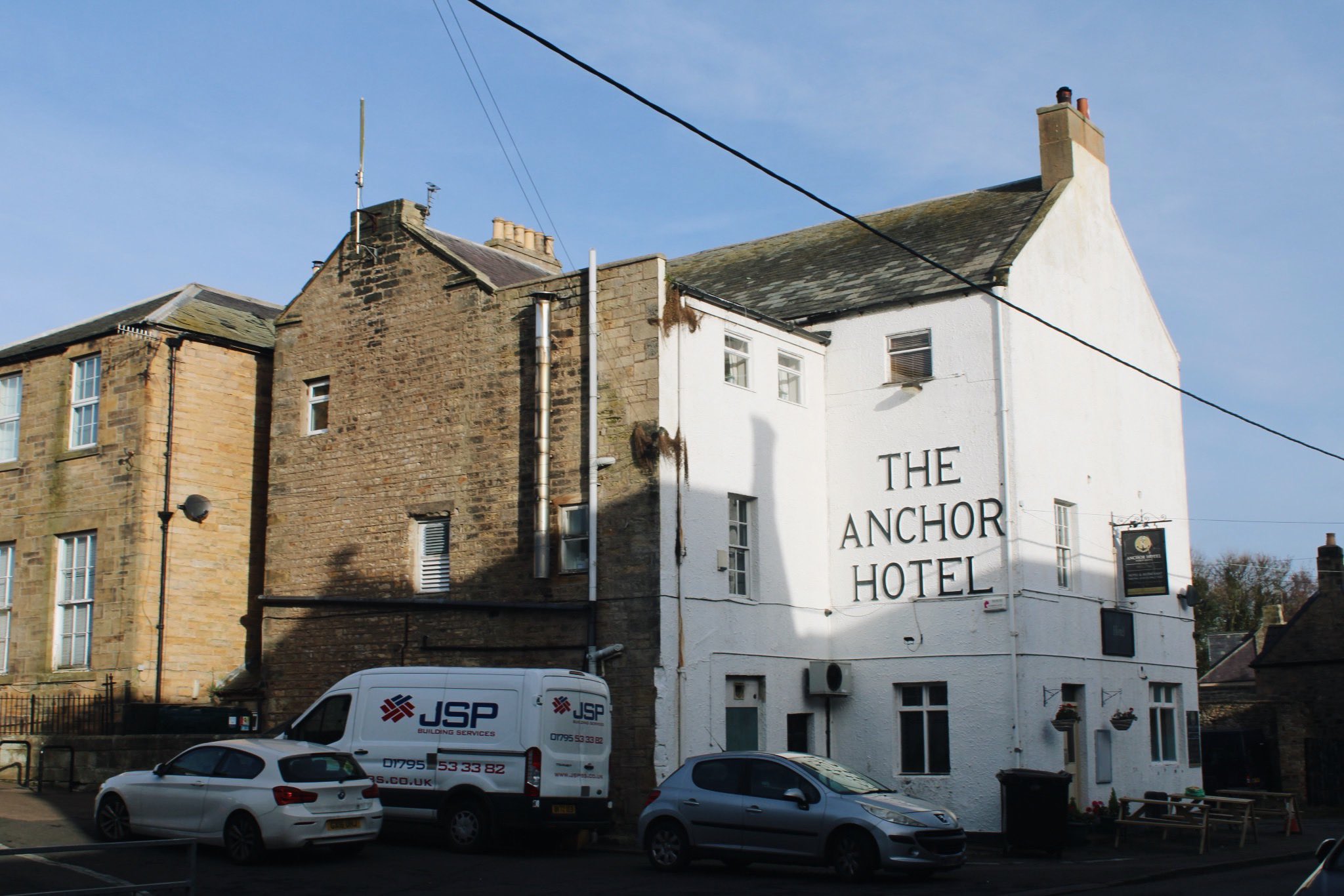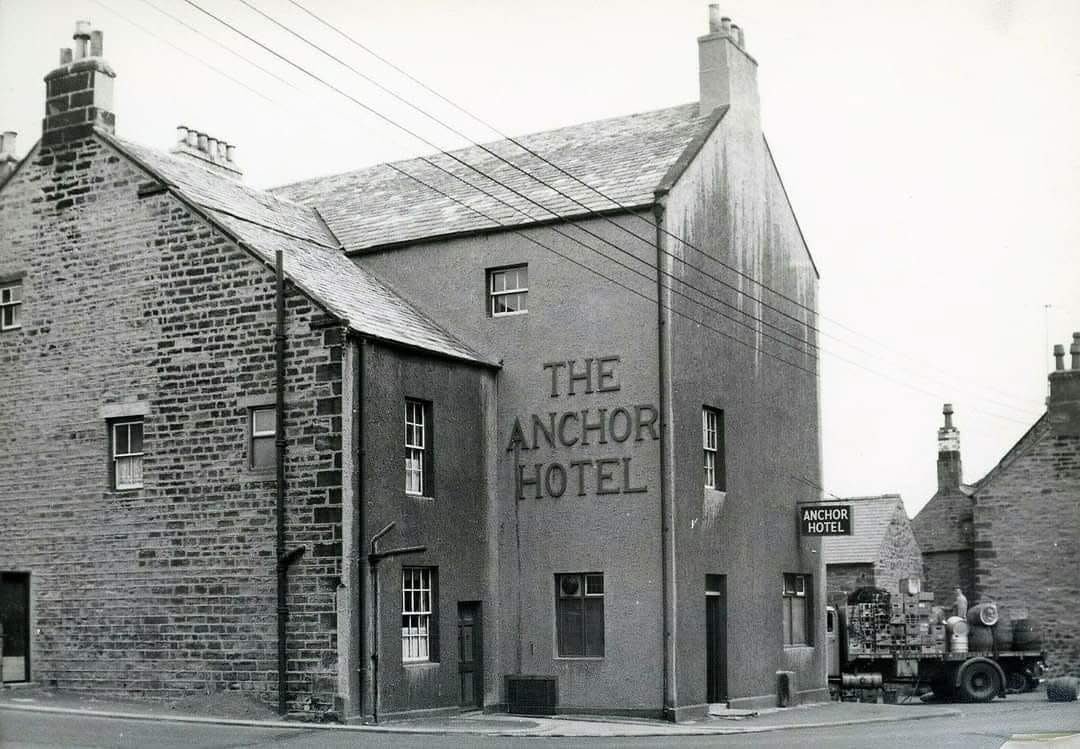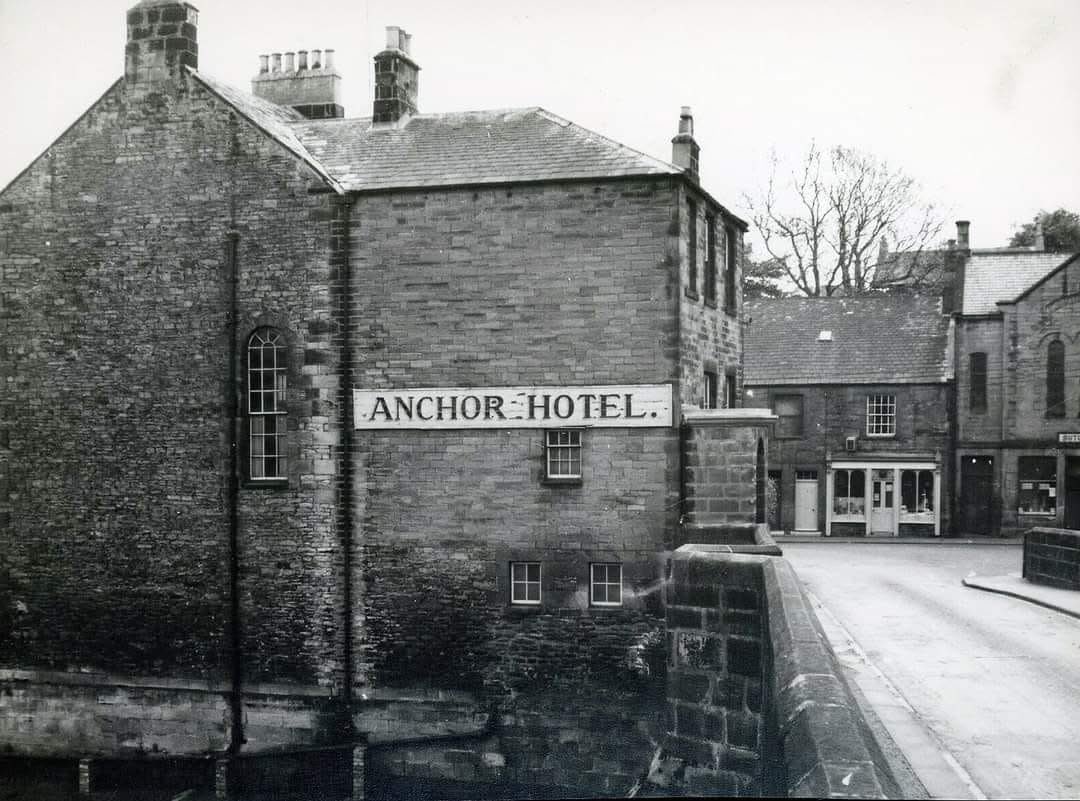
Haydon Bridge
The Anchor Hotel, Haydon Bridge
Last Updated:
17 Dec 2024
Haydon Bridge
This is a
Pub, Hotel, Rent House
54.972647, -2.245396
Founded in
Current status is
Extant
Designer (if known):

Listed Grade II
The Anchor Hotel is a landmark of the settlement, and has stood here since the 18th century. Like any historic inn it of course has its fabled tales going back to medieval times, however we can be certain this building isn’t as old. I’m surprised even the local newspaper peddles that myth!
Though in fairness there may have been an inn here early given its convenient location, the Anchor came into being around the early 1790s. It was here in 1792 where folk could purchase wood from local forests as per an advertisement in the Newcastle Courant of 1792. Ashes, Birches and Oaks could be bought from woods at Ebchester, Haydon Bridge and Hexham.
The pub was extended and improved in the 1830s by a Mr Matthew Hetherington. The contrast in age is incredibly clear in the shots from the 1950s pre-render, and it would appear to me the section closest to the bridge is the extension. It was at this time too that the Greenwich Hospital used the rear wing as the rent house, when tenants would presumably deliver their rent payment each month.
The hospital were given the lands by the crown for reasons similar to churches owning glebe land - to raise profits for the estate at large exploiting the coals, lead and land for its pursuits.
Throughout the years the Oddfellows and various societies utilised the inn for their own meetings and dinners. Flower shows were held in the yard as were auctions, especially for the tolls on the turnpikes in the area.
It was certainly a hotel by the 1890s with apartments advertised for the well to do, and remained so throughout the 20th century. I’d assume it remains one of the oldest operating in the town.
Listing Description (if available)


As per the present too, little has changed in Haydon Bridge since the late 19th century. Here, we see the transition from the 1860s to the 1890s with the Anchor located on the southern end of the bridge itself. The main changes we see explicitly is the "filling in the gaps" of the town centre as well as the northern edge next to the railway. Church Street, then Walton Place, became the main thoroughfare and therefore landed itself a second place of worship, the Primitive Chapel, and a terraced row on the west side. The station was expanded with further sidings and a goods yard, as well as housing development off the North Bank - most of which still remain. The rest of Haydon Bridge developed in later decades as you'll see below.

The infrastructure of the town was fully realised by 1922. Sewage & Gas Works were found against the Tyne on the eastern side, almshouses and schools were located on the southern fringes opposite the town hall, and a cricket ground was bedded in off the North Bank. The Anchor was enduring throughout this period nestled in between all these new developments. The more suburban developments came in the mid 20th century.

The western elevations of the Anchor in November 2024.

A photograph with a very similar perspective to the above around the 50s or 60s. Unknown original source.

The Anchor Hotel looking south towards the Oddfellows Hall. The generations of build can be clearly defined in this shot from the late 50s or 60s. Unknown original source.
